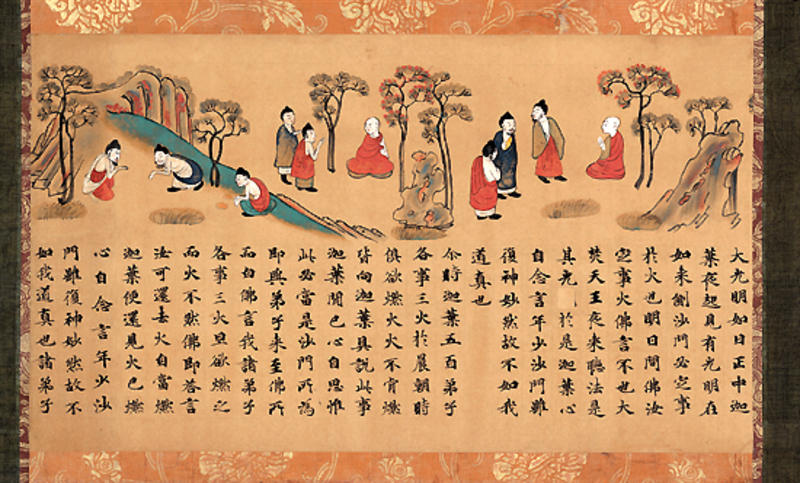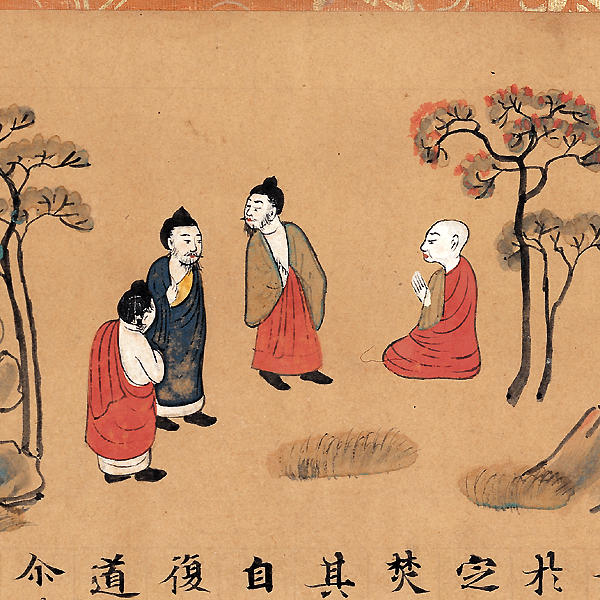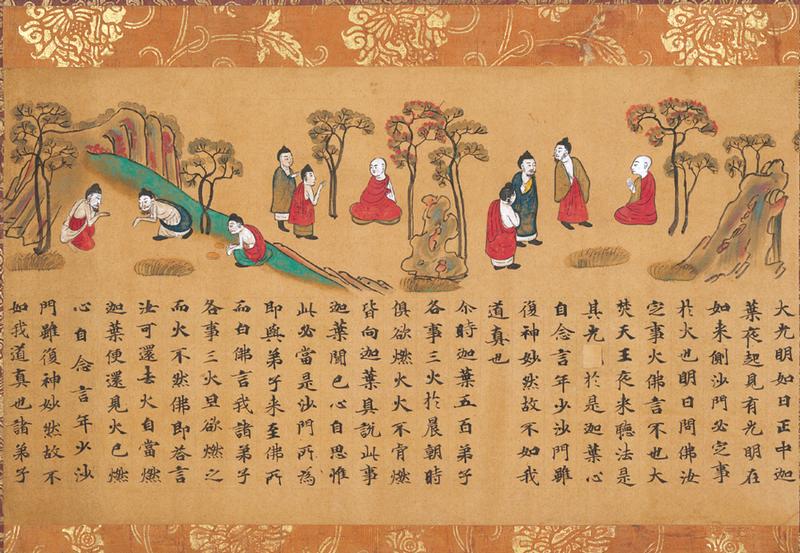Illustrated Sutra of Cause and Effect
- Nara period
- 8c
- Hanging scroll, ink and color on paper
- H-26.5 W-46
- Formerly in the collection of Masuda Don'no
Catalogue Entry
Nara period, 8th century
Hanging scroll, color and ink on paper
Height, 26.5cm; width, 46.0cm
The support paper of the E-ingakyo, or Illustrated Sutra of Cause and Effect, is divided horizontally into upper and lower registers with the text of the Kako-genzai-inga-kyo sutra (translated by Gunabhadra) of the earlier Song dynasty (420-479) written out in lines of 8 characters in the lower register, while the upper register is filled with paintings of scenes from the sutra text.
This Ingakyo sutra is a form of biography of Shaka (S⇔akyamuni), the historical Buddha, and begins with the tale of how in a former life Shaka was a religious practitioner known as Zen-ne and was taught by Fuko Nyorai (Dpamkara). From the karma of that lifetime, Shaka was then reborn in this world as a Buddha. The sutra goes on to explain the historical Buddha's life up until the conversion of Daikasho (Mahakas⇔yapa).
At present, there are several extant Nara period versions of this Illustrated Sutra of Cause and Effect, including the Jobon Rendaiji version, the Daigoji version (Ho'on-in version), the Idemitsu Museum of Art version, the former Masuda Family collection version, and the Tokyo National University of Fine Arts and Music version. This 25-line fragment is a segment from the former Masuda Family collection version (the first section of scroll 4).
This fragment shows the scene where Shaka converts the three Kasho brothers who were fire-worshipping brahmans. In one scene, the three brothers are shown surprised by the supernatural powers of Shaka, and then they are shown trying to light a fire the next morning for their fire worship, only to find that the fire will not light. They believe that the fire will not light because of Shaka's actions or powers. The brushwork in the sutra text is dignified and powerful in the style of Nara period sutra transcriptions, and the tan red, cinnabar red, malachite, shell-white, and ultramarine are extremely vivid.
The Illustrated Sutra of Cause and Effect is an extremely important historical object as it conveys the paintings of the Nara period to the present-day world and stands as a critical precursor to later handscroll painting.
The MOA Museum of Art collection includes an 84-line fragment of the 4th scroll, the first section, of the former Masuda Family collection, and the MOA fragment has been designated an Important Cultural Property. EA


